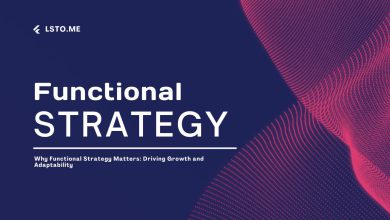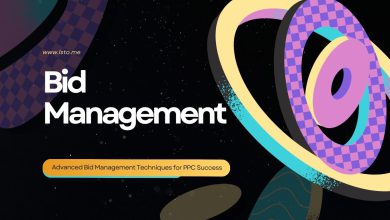
In today’s digital world, content is king. However, creating content for the sake of it is no longer enough. To stand out in a crowded market, businesses must develop data-driven content strategies. Content driven by data is not only relevant and engaging. It is also tailored to the needs and behaviors of your target audience. In this blog post, we’ll look at how to use data to drive your content strategy. We’ll provide a step-by-step guide to making data-driven content that gets results.
Understanding the Importance of Data-Driven Content Strategy
A data-driven content strategy uses data to inform every stage of content creation. This includes from coming up with ideas to spreading the content. This method lets you see what resonates with your audience. You can also find gaps in your content and judge your efforts. Using data, you can make more targeted, engaging content. It helps content support business goals.
Key Benefits of a Data-Driven Content Strategy:
- Improved Audience Understanding: Data provides insights into your audience’s preferences, behaviors, and needs, enabling you to create content that resonates with them.
- Enhanced Relevance: By analyzing data, you can identify trending topics and keywords, ensuring your content is timely and relevant.
- Increased Engagement: Data-driven content is more likely to engage your audience, leading to higher levels of interaction and sharing.
- Better ROI: With data, you can track the performance of your content and optimize it for better results, ensuring a higher return on investment (ROI).
- Informed Decision-Making: Data helps you make informed decisions about your content strategy, reducing guesswork and increasing the likelihood of success.
Steps to Using Data to Drive Your Content Strategy
1. Define Your Goals
Before diving into data analysis. You must set clear, measurable goals for your content strategy. What do you want to achieve with your content? Common goals include increasing website traffic. They also include generating leads, boosting engagement, and improving brand awareness. Specific goals will guide your data collection and analysis. They ensure you focus on the most relevant metrics.
2. Identify Key Metrics
Once you’ve set your goals, find the key metrics. They will help you measure progress toward your goals. Some essential metrics to consider include:
- Traffic Metrics: Page views, unique visitors, and session duration.
- Engagement Metrics: Likes, shares, comments, and time spent on page.
- Conversion Metrics: Click-through rates (CTR), conversion rates, and lead generation.
- SEO Metrics: Keyword rankings, organic search traffic, and backlinks.
3. Collect and Analyze Data
To develop a data-driven content strategy, gather information from a variety of sources. Here are some important tools and methods for gathering and analyzing data:
Google Analytics
Google Analytics is an effective tool for analyzing website traffic and user behavior. It shows which pages are most popular. It also shows how visitors move through your site and where they come from. Use Google Analytics to identify high-performing content and better understand your audience’s behavior.
Social Media Analytics
Social media platforms have built-in analytics tools. They provide data on post performance, audience demographics, and engagement. Analyze this data. Use it to find what content types are most popular with your social media audience.
SEO Tools
Ahrefs, SEMrush, and Moz can all help you analyze your website’s SEO performance. Use these tools to find great keywords. Use them to track your rankings. Also, use them to study your competitors’ content strategies.
Content Performance Tools
Platforms like BuzzSumo and Contently can help you analyze your content’s performance. They work across multiple channels. These tools show the most popular topics and formats. They help you refine your content strategy.
4. Audience Research
Understanding your audience is essential for creating content that resonates. Use data to learn about your target audience’s demographics, interests, and behaviors. Here are some methods for conducting audience research:
Surveys and Polling
Conduct surveys and polls to get direct feedback from your target audience. Ask them about their content preferences, challenges, and interests.
Social listening
Use social listening tools. They track social media conversations about your brand, industry, and competitors. This can assist you in identifying popular topics and understanding your audience’s sentiment.
Customer Data
Analyze CRM data to identify common characteristics and behaviors among engaged customers.
5. Content Ideation and Creation
Once you’ve defined your goals, key metrics, and audience, you can start generating content ideas. Use the following strategies to create data-driven content:
Keyword Research
Do keyword research to find the topics and search terms your audience uses. Focus on high-volume, low-competition keywords to improve your search engine ranking.
Competitor Analysis
Analyze your competitors’ content to find gaps and opportunities. Look for topics that haven’t been covered in depth or where you can offer a unique perspective.
Content Gap Analysis
Conduct a content gap analysis to identify topics and keywords that you have not yet covered. Use tools like Ahrefs or SEMrush. They find gaps in your content compared to your competitors.
Content Calendar
Create a content calendar to organize and schedule your content. Make sure your calendar includes many types of content. Include blog posts, videos, infographics, and social media updates.
6. Content Distribution and Promotion
Creating great content is only half the battle. You also need to make sure it reaches your intended audience. Utilize data to guide your content distribution and promotion strategy.
Social Media
Study your social media data. Use it to find the best times and platforms to share your content. Use social media advertising to expand your audience and increase engagement.
Email Marketing
Segment your email list according to audience behavior and preferences. Send personalized content to various segments to boost open rates and engagement.
SEO Optimization
Optimize your content for search engines. Do this by using relevant keywords, meta descriptions, and internal links. Use data from your SEO tools to continuously refine your optimization efforts.
Paid Advertising
Use data to inform your paid advertising strategy. Analyze your ads’ performance. Identify the channels, audiences, and creatives that bring the best results.
7. Measure and Optimize
The last step in making a data-driven content strategy is to measure your results. Then, you must continuously improve your efforts. Use the following strategies to track performance and make data-driven decisions:
Regular Reporting
Create regular reports. Use them to track your key metrics and measure progress towards your goals. Use these reports to identify trends, successes, and areas for improvement.
A/B Testing
Conduct A/B tests to compare content versions. They will show what resonates best with your audience. Test elements such as headlines, images, and calls-to-action.
Continuous Improvement
Use the insights from your data analysis. Use them to continuously refine and improve your content strategy. Try new formats, topics, and channels. Do this to stay ahead of the competition.
Conclusion: Embrace Data to Drive Your Content Strategy
In today’s competitive digital landscape, a data-driven content strategy is essential for success. You can use data to understand your audience. You can use it to identify trends and measure performance. This will help you create content that resonates, engages, and drives business goals. Embrace data in your content strategy. It’s a core part. Then, you’ll be on your way to lasting success in digital marketing.




